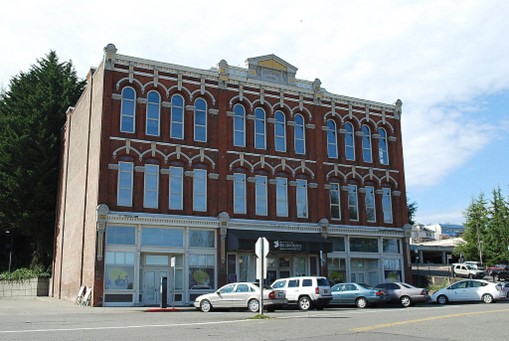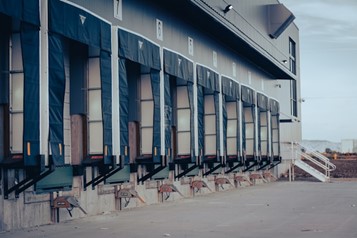The landscape of commercial real estate is evolving, and one of the most exciting trends is the redevelopment of outdated properties into modern, multi-use spaces. As cities and communities grow, there is a growing demand for versatile spaces that can adapt to changing needs. Redeveloping commercial properties, often referred to as adaptive reuse, offers a sustainable and innovative approach to transforming old spaces into new opportunities. In the following article, David Shulick explores the benefits of adaptive reuse, the process of redeveloping commercial properties, and examples of successful transformations.
What is Adaptive Reuse?
Adaptive reuse is the process of repurposing existing buildings or structures for new uses, often in a way that maintains the character of the original structure. This approach is gaining popularity as it offers a more sustainable alternative to new construction, preserving the historical and architectural elements of a building while adapting it for modern needs. Adaptive reuse can turn vacant or underutilized commercial properties into vibrant multi-use spaces that benefit both developers and the community.
Benefits of Redeveloping Commercial Properties
Redeveloping outdated commercial properties into multi-use spaces offers numerous benefits, including:
Sustainability and Environmental Impact
Adaptive reuse promotes sustainability by reusing existing structures instead of demolishing them. This reduces construction waste and minimizes the need for new materials, lowering the overall environmental impact. Additionally, reusing existing buildings can help preserve historical architecture, contributing to a city’s cultural heritage.
Economic Revitalization
Redeveloping commercial properties can revitalize neighborhoods and stimulate local economies. By repurposing vacant or underutilized buildings, developers can attract new businesses and residents, leading to increased economic activity and job creation. This revitalization can also lead to improved property values in the surrounding area.
Versatility and Flexibility
Multi-use spaces offer greater versatility and flexibility than single-use buildings. By combining residential, commercial, and office spaces, developers can attract a diverse range of tenants and users. This flexibility allows for greater adaptability to changing market trends and tenant needs.
Community Development
Redeveloping commercial properties can create community-focused spaces that foster social interaction and engagement. By incorporating public spaces, cultural amenities, and retail shops, developers can create vibrant environments that contribute to a sense of community and enhance the quality of life for residents.
The Process of Redeveloping Commercial Properties
Redeveloping commercial properties involves several key steps, each requiring careful planning and coordination. Here’s a general overview of the process:
Site Assessment and Feasibility Study
The first step in redeveloping a commercial property is to conduct a site assessment and feasibility study. This involves evaluating the condition of the existing structure, identifying potential hazards, and determining the feasibility of adaptive reuse. The study should also consider zoning regulations, building codes, and community needs to ensure the project aligns with local requirements.

Design and Planning
Once the feasibility study is complete, the next step is to design the new space. This involves working with architects, engineers, and urban planners to create a design that meets the needs of the community and complies with building codes. The design process should also consider sustainable building practices and energy efficiency.
Permitting and Approvals
Before construction can begin, developers must obtain the necessary permits and approvals from local authorities. This may involve submitting detailed plans, attending public hearings, and addressing any community concerns. Compliance with zoning regulations and building codes is crucial to ensure a smooth permitting process.
Construction and Renovation
With the necessary permits in hand, construction and renovation can begin. This phase involves structural work, electrical and plumbing installations, and interior design. Developers should prioritize safety and sustainability throughout the construction process.
Marketing and Leasing
Once construction is complete, the final step is marketing and leasing the redeveloped property. Developers should focus on attracting a diverse range of tenants, including businesses, retailers, and residents. Effective marketing strategies can help generate interest and secure long-term leases.
Examples of Successful Redevelopments
Successful examples of redeveloped commercial properties can inspire further adaptive reuse projects. For instance, the transformation of an old warehouse into a mixed-use development with residential lofts, retail spaces, and offices showcases the potential of adaptive reuse. Similarly, repurposing historic buildings into boutique hotels, art galleries, or cultural centers demonstrates the versatility of this approach.
Conclusion
Redeveloping commercial properties through adaptive reuse offers a sustainable and innovative solution to transforming outdated spaces into vibrant, multi-use environments. By preserving existing structures and adapting them for modern needs, developers can revitalize neighborhoods, promote sustainability, and create community-focused spaces. As cities continue to grow and evolve, the trend toward adaptive reuse is likely to gain momentum, offering new opportunities for developers and communities alike.
